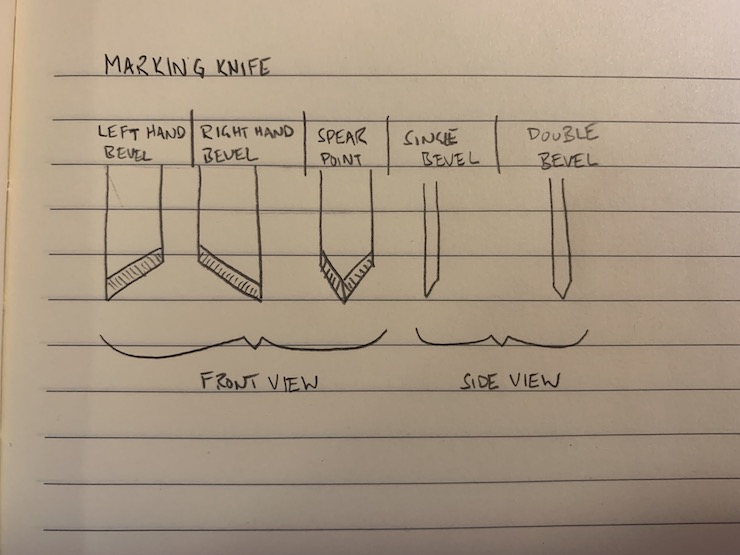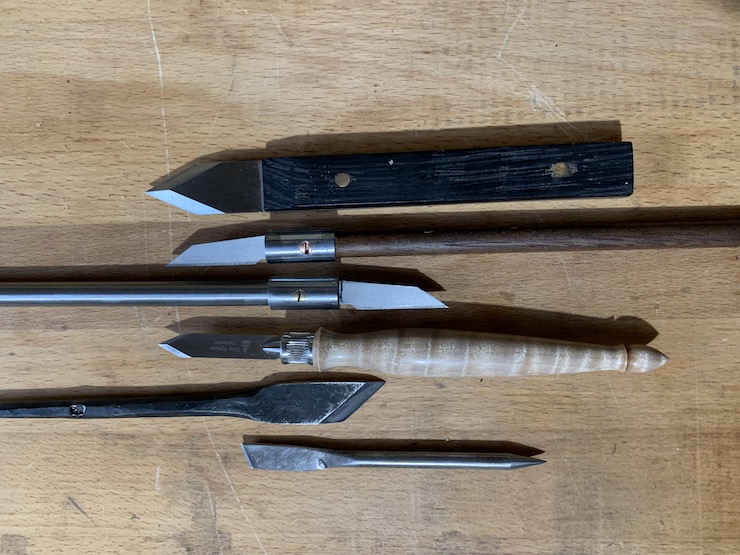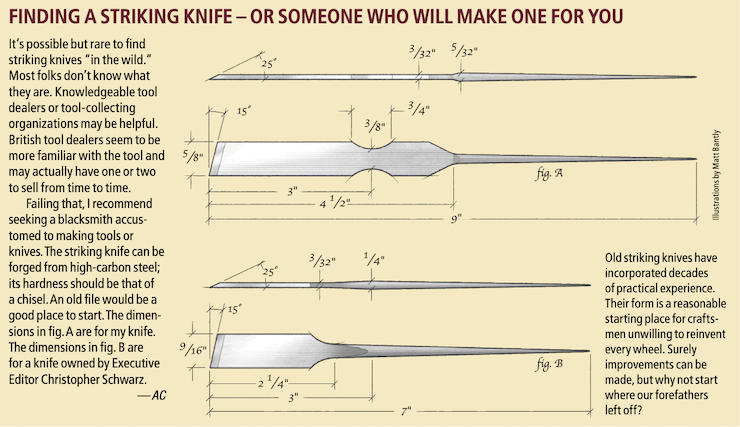The Marking Knife
The marking knife is used in place of a pencil to create a physical line. A knife line is much more precise than a pencil or pen line. The knife slices through the grain of the wood, creating a place for a chisel edge to register. This physical indentation will guide a pencil lead if you wish to darken the line after. By paring out a little material next to a knife line with a chisel, you can also be create a knife wall that will physically register a saw for starting a precise cut exactly to one side of a line.
Today there are many styles and options for marking knives. A single-bevel knife where there is only a bevel on one side of the cutting edge (like a chisel or plane iron) works best for cutting right up against the blade of a square or bevel gauge, however, dual bevel knives where the cutting edge is ground on both sides to form a V can be just as functional. When it comes to shape, the cutting edge can be on the left side of the knife, right side of the knife, or shaped to a spear point. In my own opinion, a thinner and longer blade will also serve you for marking in tight spots, such as marking tails and/or pins in dovetailing. For thicker blades, look for a spear point where the back of the blade can go right up against both sides of a dovetail for registering your cut.

Modern options could range from a shop made knife from a worn out chisel or plane blade, cheap/replaceable blades like a box cutter or x-acto knife, to a blade (such as those sold by Hock) that you handle yourself, to any number of middle to high-end makers. In practice, any knife with a honed edge that you can get a firm grip of will work.

The knives I have in my own shop are:
- Hock Tools 3/4” marking knife that I added wenge scales and 3/16” copper pins
- Two knives I made that accept Swann Morton blades
- Blue Spruce Toolworks’ classic marking knife in curly maple
- A modern forged striking knife
- A simple striking knife hammered from 1/4” round steel
If I were to start over, I’d likely pick out three knives. One spear-point and a pair of dedicated left/right hand bevel knives. The single-bevel knives could be forged striking knives as well.
- Blue Spruce classic marking knife
- Hock Tools left-handed (VK025L) and right-handed (VK025R) bevel Violin Knife blades
I’ve also had a go at making my own marking knives based on Matt Estlea’s design. I use the Swann Morton 01 through 03 blades, a 3/8” bushing sleeve as a ferrule, 3/16” rod I threaded #10-32 for a grub screw, and a 3/8” dowel rod.
The Striking Knife
Today the terms “marking knife” and “striking knife” are almost used interchangeably. Traditionalists will hold that a striking knife is forged from all metal, and has an awl point on the long end. That point is handy marking screw locations for hardware, another marking task.
A drawing of the striking knives owned by Adam Cherubini and Christopher Schwarz from Popular Woodworking #147 (April 2005):
